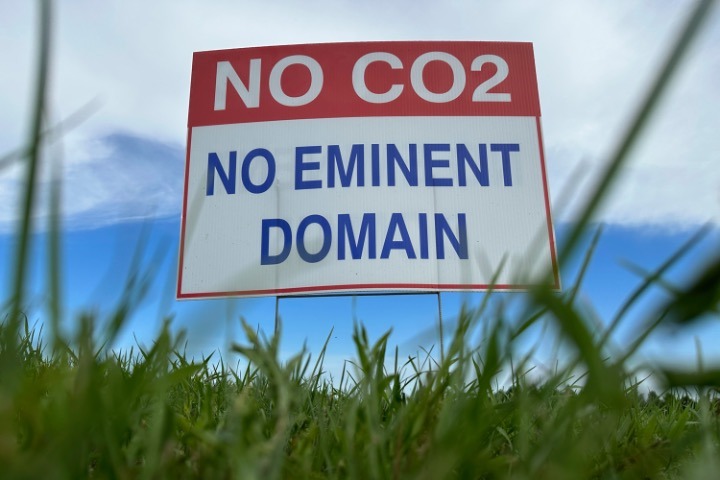
Solutions to Carbon-capture Strong-arming – The New American

The Pipeline Fighters Hub hosted a webinar Thursday, October 12, entitled “Explaining Federal Pipeline Safety Agency PHMSA’s Letter Re: Local Authority Over CO2 Pipelines.”
PHMSA stands for Pipeline and Hazardous Materials Safety Administration (PHMSA), a division of the U.S. Department of Transportation. The agency’s associate administrator for pipeline safety, Alan K. Mayberry, sent a letter on September 15 to three private companies, informing them that state and local governments dictate location and routing of pipeline projects. According to PHMSA, the agency regulates pipeline safety standards, but Congress never gave it authority over pipeline placement.
Despite the clarity of the letter, “CO2 pipeline companies continue to challenge county ordinances that were passed by elected officials in multiple states, in an effort to protect their communities and lives from these proposed hazardous pipeline projects,” explains the Pipeline Fighters Hub. The private companies argue that, because PHMSA oversees safety standards, no state or county can consider safety measures when deciding whether to approval pipeline permit applications.
Companies involved are Navigator CO2 Ventures, Summit Carbon Solutions, and Wolf Carbon Solutions. Both Navigator and Summit have had permit applications rejected by authorities in North and South Dakota during the past two months.
Thursday’s webinar featured Paul Blackburn, attorney for Bold Alliance, a grassroots coalition of rural landowners who have banded together to “fight pipelines and Big Corporations that threaten the land and water.” Joining Blackburn was Bill Caram, executive director of the Pipeline Safety Trust, a watchdog group formed after a tragic 1999 pipeline accident in which two young boys lost their lives. Mark Hefflinger, communications director of Bold Alliance and the Pipeline Fighters Hub, moderated the discussion.
Caram pointed out that pipeline safety is really a cooperative effort among localities, states, and the federal government. States and counties dictate routing and siting issues, including setback distances and property development. States are not allowed to issue stronger safety regulations than PHMSA’s rules on interstate pipelines, but intrastate pipelines are entirely under the jurisdiction of states.
PHMSA does not have a history of stepping outside its bounds, Caram reported. It has been hamstrung by Congress, with a strict statutory cost-benefit requirement imposed on it. Whenever the agency undertakes any rule-making, the cost to the industry has to be justified by the benefits. That has been a hurdle for them in the past, as has been the fact that there is no significant increase in PHMSA funding despite expansion of pipelines in recent years.
Other points of interest he mentioned were that PHMSA is prohibited from issuing regulations that would apply to existing pipelines. However, new, stricter rules are coming out soon, which will apply to any future CO2 pipelines that are not already approved before publication. In fact, Congressional Democrats recently asked the Biden administration to place a moratorium on carbon-capture pipelines until the new safety regulations are published.
Interestingly, Caram said that it is not illegal to spill out of a pipeline. That amounts, he said, to yet another reason that states and counties should consider safety in routing.
Blackburn’s presentation addressed preemption issues and the “next steps” for counties to take. He pointed out that if a state agency can consider safety — if it is not preempted by federal law — then so can a county. The preemption under the Pipeline Safety Act states that “the State authority may not adopt or continue in force safety standards for interstate pipeline facilities or interstate pipeline transportation.” However, considering safety issues is not the same thing as developing or enforcing safety standards, Blackburn explained.
Significantly, the Act also states, “This chapter does not authorize the Secretary of Transportation to prescribe the location or routing of a pipeline facility.” Blackburn recommends thinking “of ‘safety standards’ as a building code for pipeline companies.” Simply put, this is not an area with any legal ambiguity.
But does PSA preempt state and local authority over all safety considerations? As stated earlier, this is an argument brought by the carbon-capture pipeline companies. However, the South Dakota Public Utilities Commission considered a large amount of pipeline safety testimony in its Navigator case. Blackburn cited a Minnesota PUC hearing which did the same in relation to that state’s Line 3 oil pipeline.
He also reviewed three federal cases that have dealt with the specific issue. All three held that consideration of safety as a factor in a location decision is not the same as imposing a safety standard. The 4th Circuit Court of Appeals said that the field of pipeline safety is separate from the field of pipeline routing.
Nevertheless, the Federal District Court for the Southern District of Iowa recently issued a preliminary decision that found that the Shelby County setbacks were preempted under state law. However, Blackburn pointed out that this is a different situation altogether, as federal law was not involved.
Moreover, said Blackburn, “the Pipeline Safety Act applies only after a route is approved; if a route is not approved, the pipeline would never be constructed and safety standards would not be applied.” If the opposite were true, the practical result is that no agency at any level of government could consider safety in routing, which Blackburn calls “an irrational result.”
Blackburn further emphasized that PHMSA doesn’t regulate states, local agencies, or individual citizens. It only regulates pipeline companies. “Local governments know their needs and territories better than the feds.” He therefore recommended that counties implement protective ordinances now to avoid future ambiguity.
The Pipeline Fighter’s Hub provides a Landowner & County Leader Guide to Carbon Pipeline Risks, published by BoldNebraska.org, EasementLLC.org and NEeasement.org.
A recording of the webinar is available here.
Hefflinger provided further links to organizations related to pipeline issues. Those in Louisiana can look to https://healthygulf.org/ and https://www.lagainstfalsesolutions.org/the-coalition. In Illinois, he recommends https://www.icc.illinois.gov/home/illinois-gas-pipeline-safety-program. A national organization with resources to help is the National Association of Pipeline Safety Representatives.


